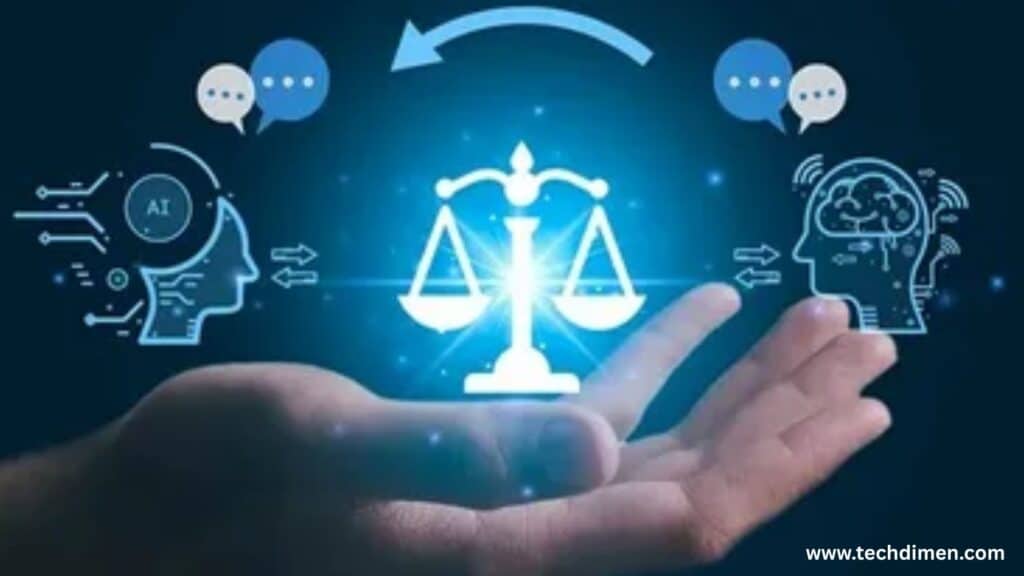Interodaction
In today’s digital landscape, trusted technology isn’t just a fancy phrase it’s an essential pillar for businesses, governments, and individuals alike. Everyone wants technology that protects their data, respects their privacy, and performs reliably under pressure. But what does it actually mean for technology to be “trusted”? How do you spot reliable tech solutions amid a sea of flashy but risky options? This comprehensive guide dives deep into those questions, offering clear facts, real-world examples, and actionable insights.
Why Trust Matters in Modern Technology

We live in a world where cyber threats lurk around every corner. Data breaches and hacking incidents happen daily, causing billions of dollars in losses worldwide. For example, the 2017 Equifax breach exposed the personal data of 147 million people and ended up costing the company over four billion dollars in damages and settlements. Incidents like this underline why trust in technology is more critical than ever.
Trusted technology builds confidence by prioritizing privacy and security through measures such as end-to-end encryption, multi-factor authentication, and ongoing security audits. These systems protect users from unauthorized access and data leaks while providing clear, transparent policies about how data is handled. When companies implement these practices, users and organizations feel safer entrusting their information to digital platforms.
Certain types of technology require an especially high level of trust because of the sensitive data they handle. Healthcare providers use HIPAA-compliant electronic medical record systems that track who accesses patient data, while financial services rely on SOC 2 certified fintech platforms that offer real-time transaction monitoring. Governments depend on ISO 27001 certified infrastructure that manages critical data with risk management protocols and continuous testing to prevent failures.
Key Features of Trusted Technology
The mark of trusted technology lies in several defining features. First and foremost is robust security. Enterprise security systems have evolved well beyond simple antivirus software. They now adopt a zero trust architecture, which assumes that no part of a network is inherently safe, requiring verification at every access point. Companies also use penetration testing tools to simulate cyberattacks and identify vulnerabilities before bad actors do. Communication channels are secured through encrypted APIs to prevent unauthorized data interception.
Transparency plays a crucial role in building trust. Trusted platforms openly disclose their data handling practices and often allow external audits of their software. Some even make their code available for review, providing a clear window into how their systems work. This openness helps users and regulators hold companies accountable and fosters digital integrity.
Long term reliability also defines trusted technology. Users expect their systems to perform consistently without sudden downtime or failures. This expectation leads trusted providers to offer service level agreements guaranteeing uptime, conduct continuous vulnerability testing, and maintain disaster recovery systems to quickly bounce back from disruptions. These commitments ensure that users experience minimal interruption and secure data even during unforeseen events.
Industries Relying on Trusted Tech

Certain industries have no choice but to rely heavily on compliant tech infrastructure that meets strict regulatory demands and protects sensitive data. Healthcare systems, for instance, embed privacy-enhancing technologies such as encrypted communication and strong identity and access management controls to comply with HIPAA. Moreover, some healthcare AI applications now focus on ethical AI models that explain their decisions clearly to avoid bias.
The finance sector enforces even more rigorous standards. Platforms in banking and fintech typically hold SOC 2 certification and comply with GDPR, ensuring that customer data stays private and transactions remain secure. They use multi-factor authentication, real-time threat intelligence, and sometimes blockchain-based solutions to enhance transparency and reduce fraud risk.
Government and critical infrastructure projects rely on technologies that follow ISO 27001 certification and deploy zero knowledge proof systems, which allow verification of data without revealing the data itself. Continuous monitoring and rapid incident response capabilities keep these systems safe and operational, especially in sensitive environments like smart cities.
How to Identify Truly Trusted Technology
Choosing technology isn’t just about shiny features or marketing claims; it requires careful evaluation of trust indicators. Certifications are a reliable way to start. Look for SOC 2, which assesses how well a company controls security and privacy risks. ISO 27001 certification demonstrates adherence to internationally recognized information security management standards. If you operate in or serve customers in Europe, GDPR compliance is non-negotiable for handling personal data responsibly.
Beyond certifications, user reviews and industry recognition can provide insight into a provider’s real-world reliability. Genuine testimonials and independent case studies reveal how technology performs in practice.
Finally, continuous support and regular updates are hallmarks of trusted vendors. Look for companies that offer ongoing software patches, compliance monitoring, and responsive customer service, all of which ensure the technology remains secure and effective over time.
The Future of Trusted Technology

Looking ahead, technologies like artificial intelligence and blockchain are reshaping how trust is established. Ethical AI models are designed to be explainable, giving users clarity on how decisions are made rather than operating as “black boxes.” Blockchain technology supports decentralized data models, which reduce risks by eliminating single points of failure and increase transparency.
Ethical considerations are becoming central to innovation. Tech companies now embed principles that prioritize responsible data governance, avoid biases in machine learning, and build privacy by design into their products.
The future of trusted technology will lean heavily on platforms that are scalable yet secure, adaptable to changing regulations while upholding privacy-first values. These platforms will provide businesses and individuals with the confidence to embrace new technologies without compromising on safety or ethics.
Choosing the Right Tech Partner
Selecting a technology partner involves more than picking the cheapest or flashiest solution. It requires trust. A reliable vendor has a history of proven technology reliability and a strong reputation backed by verifiable certifications and customer satisfaction.
Before investing, ask potential partners about their data security practices, certifications like SOC 2 or ISO 27001, and their incident response plans for data breaches. Request evidence of third-party audits to verify compliance claims.
For example, a fintech startup that needed a secure cloud platform chose a vendor offering continuous vulnerability testing and full encryption compliance. This partnership helped reduce their risk exposure by 40 percent and increased customer trust significantly.
Summary of Trusted Technology Traits
Trusted technology consistently delivers on several fronts. It provides robust security with features like zero trust architecture and multi factor authentication. Transparency ensures users know how their data is used and protected, often backed by open source code reviews or clear policy disclosures. Compliance with industry standards such as SOC 2 and ISO 27001 guarantees that systems meet rigorous security and privacy benchmarks. Reliability comes through service level guarantees and disaster recovery capabilities. Lastly, ethical innovation ensures technology respects user rights and embraces responsible design.
FAQs
What is trusted technology?
Trusted technology refers to software and hardware systems designed with strong security, privacy, and reliability measures. These technologies follow strict standards and certifications to ensure users’ data is protected and that the system performs consistently without failures.
Why is trusted technology important for businesses?
Businesses rely on trusted technology to safeguard sensitive data, maintain operational uptime, and comply with regulations. Using secure and reliable tech solutions helps prevent costly data breaches, protects customer privacy, and builds confidence with clients and partners.
How can I identify if a technology solution is trustworthy?
Look for certifications like SOC 2, ISO 27001, or GDPR compliance, as they indicate strong security and privacy controls. Check for transparency in data handling, user reviews, third-party audits, and a vendor’s commitment to continuous updates and support.
What industries need trusted technology the most?
Healthcare, finance, and government sectors require the highest levels of trust due to the sensitive nature of their data and regulatory requirements. However, any industry handling personal or critical data benefits from implementing trusted technology.
What role does transparency play in trusted technology?
Transparency means openly sharing how data is used, protected, and managed. It often includes allowing audits, sharing privacy policies clearly, and sometimes making code available for inspection. Transparency builds trust by showing users and regulators that a company is accountable.
How does zero trust architecture improve security?
Zero trust architecture assumes no part of a system is automatically secure. It requires strict identity verification and access controls at every point, reducing the risk of unauthorized access and lateral movement within a network during an attack.
What future trends will impact trusted technology?
Emerging technologies like ethical AI, explainable AI models, blockchain, and privacy-first platforms will shape the future of trusted technology. These tools focus on transparency, responsible innovation, and decentralized trust models to increase security and user confidence.
Can small businesses benefit from trusted technology?
Absolutely. Trusted technology isn’t just for large enterprises. Small businesses can enhance their security posture, comply with regulations, and improve customer trust by adopting reliable, compliant, and transparent tech solutions.
How do trusted technology partners support ongoing security?
Trusted partners provide continuous software updates, security patches, regular vulnerability testing, and dedicated customer support. They proactively monitor compliance requirements and help respond quickly to emerging threats or incidents.
What questions should I ask before choosing a technology vendor?
Ask about their security certifications, data protection policies, incident response plans, transparency practices, and customer support services. Request proof of third-party audits and inquire about how they handle compliance with regulations relevant to your industry.
Final Thoughts
Trusted technology drives innovation while safeguarding what matters most: data, privacy, and peace of mind. By focusing on secure, transparent, and ethically designed solutions, organizations can build stronger relationships with their users and prepare for a future where trust in technology is paramount.
When evaluating software or digital platforms, always dig beyond the surface. Demand proven enterprise security systems, insist on transparency, and seek partners that provide continuous support. That’s how you transform good technology into truly trusted technology and protect your digital future.

Jhon AJS is a tech enthusiast and author at Tech Dimen, where he explores the latest trends in technology and TV dimensions. With a passion for simplifying complex topics, Jhon aims to make tech accessible and engaging for readers of all levels.







